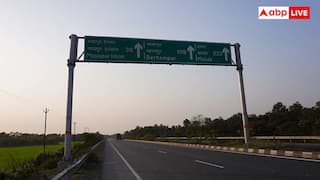Chandrayaan-3’s Landing Date, August 23, Formally Declared By Cabinet As National Space Day
Chandrayaan-3: On August 23, India became the first country to softly land a spacecraft on the Moon’s south pole. Chandrayaan-3’s Vikram lander and Pragyan rover have started operations on the Moon.

Chandrayaan-3: August 23, the date of Chandrayaan-3’s historic soft landing on the Moon’s south pole, has formally been declared by the Union Cabinet as National Space Day, Anurag Thakur, Union Minister of Sports, Youth Affairs and Minister of Information and Broadcasting, announced on August 29, 2023. He said that the Cabinet applauds this historic achievement of scientists at the Indian Space Research Organisation (ISRO) who worked on the Chandrayaan-3 mission, news agency PTI reported. “This is not only a success for the Indian space agency, but also a testament to the progress made by India in the field of space, and a symbol of the country’s strength in the global space race.”
He congratulated the ISRO scientists for their endeavour and hard work.
VIDEO | "The Cabinet lauds the historic success of ISRO scientists who worked for the Chandrayaan-3 mission. It is a symbol of our strength on global stage. It (Cabinet) also welcomes the move to celebrate August 23 as 'National Science Day'," says Union Minister @ianuragthakur… pic.twitter.com/k8IxcqPSCl
— Press Trust of India (@PTI_News) August 29, 2023
On August 23, India became the first country to softly land a spacecraft on the Moon’s south pole. Chandrayaan-3’s Vikram lander and Pragyan rover have started operations on the Moon. A payload onboard the Vikram lander has produced the first temperature-depth profile of the Moon’s south pole.
On August 27, the Pragyan rover came across a large crater of size four metres. However, on the same day, the rover changed its path after a command from ground control stations, and moved on to a safe path.
Since Vikram and Pragyan began operations on August 24, and their mission duration is 14 Earth days, they are expected to conduct experiments on the Moon till the first week of September.
On September 2, at 11:50 am IST, ISRO will launch the Aditya-L1 spacecraft atop a PSLV-XL (Polar Satellite Launch Vehicle) rocket, from Satish Dhawan Space Centre, Sriharikota, Andhra Pradesh. Aditya-L1 is India’s first space-based solar observatory to study the Sun. The spacecraft will study solar activities, how they affect space weather, how particles and fields in the interplanetary medium are impacted by coronal mass ejections, what the mechanisms of heating of the different layers of the Sun’s atmosphere are, why the problem of coronal heating occurs, what processes occur in the magnetic field around the Sun, the dynamics of plasma in the corona, and different parameters of ionised particles.
Aditya-L1, which will reach a halo orbit around the Lagrange point 1 (L1) four months from launch, is expected to operate for five years.
The observatory is equipped with seven payloads, four of which will study the Sun, and three will conduct in-situ experiments on the impact of solar activities on particles and fields at the Lagrange point.
Related Video
Southern Rising Summit 2024: How Important is Self-Awareness? Insights from Anu Aacharya | ABP LIVE





































